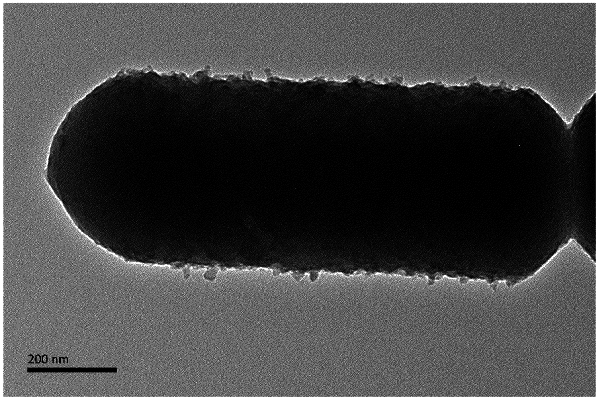| CPC A61K 9/5176 (2013.01) [A61K 9/5073 (2013.01); A61K 9/5115 (2013.01); A61K 9/5169 (2013.01); A61K 35/741 (2013.01)] | 8 Claims |

|
1. An encapsulated probiotic comprising:
a probiotics solution, wherein the probiotics solution has a concentration between 1*106 CFU/mL and 1*109 CFU/mL;
a biomass-based encapsulating material for protection of probiotic activity of the probiotics solution, the biomass-based encapsulating material comprising a nano-film, the nano-film comprising:
a first layer formed from covalent cross-linking or metal chelating action in situ between metal ions of a metal salt aqueous solution and biological macromolecules of a macromolecular aqueous solution, wherein the metal ions are selected from the group consisting of cations of Al, Fe, Zn, Mn, Ni, Co and V and combinations thereof, wherein the biological macromolecules are selected from the group consisting of polyphenol, dopamine, dopamine derivatives, polysaccharide biomass, and combinations thereof, wherein the metal salt aqueous solution has a concentration between 1 mg/mL and 10 mg/mL, wherein a volume ratio of the metal salt aqueous solution to the probiotics solution is 1:50, wherein the macromolecular aqueous solution has a concentration between 10 mg/mL and 100 mg/mL, wherein a volume ratio of the macromolecular aqueous solution to the probiotics solution is 1:50; and
a second layer formed by interactions between bio-enzymes of a bio-enzyme solution and the biological macromolecules of the macromolecular aqueous solution, wherein the bio-enzymes are selected from the group consisting of β-galactosidase, amylopsin, α-glucosaccharase, β-glucosaccharase, pancreatic lipase, trypsin, cellulose, and combinations thereof, wherein the bio-enzyme solution has a concentration between 1 mg/mL and 20 mg/mL, wherein a volume ratio of the bio-enzyme aqueous solution to the probiotics solution is 1:50.
|